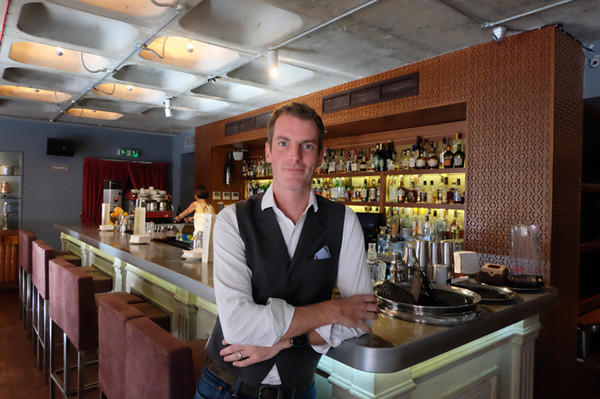 |
|
Paul Mathew, one of London's very few baijiu experts in his own bar The Hide.[Photo provided to China Daily] |
Paul Mathew still remembers vividly the first time he tasted baijiu, the fiery white Chinese spirit. He was on a business trip to Yunnan in 2004. "Pungent" is the word he uses to describe the drink, and he did not appreciate it very much.
Today, however, he's become one of London's very few baijiu experts, and his bar, The Hide, will be hosting a day of creative baijiu-tasting and cocktail-making on Aug 8, which has been dubbed World Baijiu Day by organizers in Beijing.
A traditional Chinese drink typically containing 40 to 60 percent alcohol by volume, baijiu is usually distilled from fermented sorghum, and has been made for about 5,000 years in China. Despite being little known beyond China's borders, it is statistically the world's most-consumed alcohol.
Although China's younger generation are shunning it in favor of Western drinks such as Champagne, whisky and wine, internationally baijiu is making some gains among businessmen who are becoming familiar with Chinese business dinner-table etiquette.
Mathew's first-time experience is a good example. Working for a conservation charity in China, he had to drink with a group of Chinese forestry officials. "I was drinking in the 'ganbei' way, drinking hard and drinking lots. The baijiu we had was a local brand, we were not told anything about it, and had to drink in quantity," he says.
But in 2009, Mathew moved to Beijing with his family and lived there for four years. During this time, he became acquainted with the white liquor's production process and started to appreciate the subtle flavors in different types.
"On one end of the scale, there is Redstar, which has a light fragrance and is easy to start mixing drinks with, and accessible to a Western palate. Then there are drinks like Shuijingfang, which has a full-bodied profile. At the strong end, there is Wuliangye, which is the most pungent I've ever done anything with; I like to taste it, but I need to prepare myself for it," he says.
Mathew made the move to Beijing to accompany his wife, a diplomat who served a term in China, and he loved the experience. During the family's time there, Mathew would drop off his daughter to school every day, and spend much time exploring Beijing. He also did some consulting work for bars and drinks brands, and wrote articles for a drinks magazine. He also enjoyed running in Beijing's parks, learning Mandarin, tasting Chinese food, and traveling across China to see and experience the vast variety of landscape and cultures the country has to offer.
One major drinks company he did consulting work for was Diageo, which had a partnership with the baijiu brand Shuijingfang. As a result of the connection, Mathew started to explore the possibility of mixing Shuijingfang into classic Western cocktails-such as his Blood and Sand, in which baijiu acts as a substitute for Scotch whisky.
He then helped several Beijing bars to put this on their menu, so that expats and tourists could try their familiar drinks being prepared in an innovative local way. "It was a love-hate thing. Some thought they're brilliant and interesting, others didn't like the flavor," he says.
After returning to London, Mathew brought back his knowledge of baijiu to The Hide, a bar he opened nine years ago near London Bridge, in the heart of London. The bar serves two baijiu brands, Wen Jun and Shuijingfang. The bar is located next to the Wine & Spirit Education Trust, a drinks education provider, and very often students who hear about baijiu pass by the bar to try it. Bartenders at The Hide would introduce the history and production processes to customers and allow them to try it. During the World Baijiu Day, his team will be serving a range of innovative cocktails made with the Chinese spirit.
|
|
|
|
|
|
|
|
